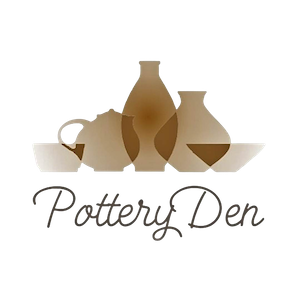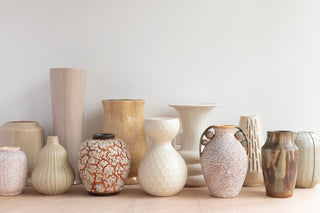In the realm of artistic expression, few crafts hold the same timeless appeal and cultural significance as pottery. From the ancient civilizations of Mesopotamia to the bustling studios of contemporary artisans, the art of shaping clay into exquisite vessels and sculptures has captivated the imagination of humanity for millennia. Join us as we embark on a captivating journey through the rich tapestry of pottery, exploring its diverse styles, techniques, and cultural heritage.
Earthenware: Crafting Rustic Elegance
Earthenware pottery, with its warm, earthy tones and porous texture, has long been cherished for its rustic charm and versatility. Crafted from clay fired at low temperatures, earthenware pieces exude a welcoming vibe that seamlessly blends with any decor. From hand-painted pottery classes to bespoke ceramic workshops, artisans continue to celebrate the timeless allure of earthenware, creating everything from functional cookware to decorative ornaments that add a touch of artisanal elegance to everyday life.
Stoneware: Enduring Beauty and Practicality
For those seeking durability without compromising on aesthetic appeal, stoneware pottery offers the perfect blend of form and function. Baked at higher temperatures than earthenware, stoneware boasts a non-porous surface that is both resilient and visually striking. Whether adorning the dining table with handcrafted dinnerware or embellishing living spaces with sculptural vases, clay pottery (or cermaic pottery) enthusiasts appreciate the enduring beauty and versatility of stoneware creations.
Porcelain: The Epitome of Elegance
Porcelain, with its delicate appearance and luminous translucency, has long been revered as the epitome of ceramic craftsmanship. Crafted from pure white kaolin clay and fired at high temperatures, porcelain pieces exhibit a timeless elegance that transcends trends. From intricately painted tea sets to minimalist sculptures, porcelain pottery workshops continue to inspire artisans to push the boundaries of creativity, offering a glimpse into the exquisite world of fine craftsmanship.
Raku: Embracing Spontaneity and Serendipity
Originating in Japan, Raku pottery embodies the spirit of spontaneity and experimentation, offering a stark contrast to the meticulous precision of traditional ceramic techniques. Fired at low temperatures and rapidly cooled using combustible materials, Raku pieces boast unique surface effects characterized by crackles and iridescent hues. Embraced by modern ceramic artists for its rustic charm and unpredictable nature, Raku pottery workshops invite enthusiasts to embrace the beauty of imperfection and embrace the unexpected in their creative journey.
Majolica: A Celebration of Colour and Narrative
Drawing inspiration from the vibrant hues and intricate designs of the Mediterranean, Majolica pottery is a testament to the enduring allure of storytelling through art. Characterized by its bright glazes and elaborate motifs, Majolica pieces often depict scenes from nature or historical events, inviting viewers to embark on a visual journey through time and culture. Whether adorning the walls as decorative tiles or gracing the table as ornamental plates, Majolica pottery classes continue to ignite the imagination of aspiring artists, offering a window into the rich heritage of ceramic artistry.
Terracotta: A Testament to Timeless Tradition
Rooted in ancient civilizations and folk traditions, terracotta pottery embodies the enduring legacy of human creativity and ingenuity. Crafted from red clay and left unglazed, terracotta pieces exude a warm, earthy charm that evokes a sense of connection to the past. From architectural elements adorning historic landmarks to handcrafted sculptures celebrating cultural heritage, terracotta pottery workshops serve as a beacon of tradition and craftsmanship, preserving the rich tapestry of human history for generations to come.
In conclusion, the world of pottery is a vibrant tapestry of creativity, craftsmanship, and cultural heritage. Whether crafting rustic earthenware or delicate porcelain, artisans continue to push the boundaries of innovation while honoring age-old traditions. Through pottery classes, workshops, and exhibitions, enthusiasts of all ages can embark on their own creative journey, discovering the joy of shaping clay into timeless works of art. So why not explore the captivating world of pottery today and unleash your inner artist?
Earthenware: Crafting Rustic Elegance
Earthenware pottery, with its warm, earthy tones and porous texture, has long been cherished for its rustic charm and versatility. Crafted from clay fired at low temperatures, earthenware pieces exude a welcoming vibe that seamlessly blends with any decor. From hand-painted pottery classes to bespoke ceramic workshops, artisans continue to celebrate the timeless allure of earthenware, creating everything from functional cookware to decorative ornaments that add a touch of artisanal elegance to everyday life.
Stoneware: Enduring Beauty and Practicality
For those seeking durability without compromising on aesthetic appeal, stoneware pottery offers the perfect blend of form and function. Baked at higher temperatures than earthenware, stoneware boasts a non-porous surface that is both resilient and visually striking. Whether adorning the dining table with handcrafted dinnerware or embellishing living spaces with sculptural vases, clay pottery (or cermaic pottery) enthusiasts appreciate the enduring beauty and versatility of stoneware creations.
Porcelain: The Epitome of Elegance
Porcelain, with its delicate appearance and luminous translucency, has long been revered as the epitome of ceramic craftsmanship. Crafted from pure white kaolin clay and fired at high temperatures, porcelain pieces exhibit a timeless elegance that transcends trends. From intricately painted tea sets to minimalist sculptures, porcelain pottery workshops continue to inspire artisans to push the boundaries of creativity, offering a glimpse into the exquisite world of fine craftsmanship.
Raku: Embracing Spontaneity and Serendipity
Originating in Japan, Raku pottery embodies the spirit of spontaneity and experimentation, offering a stark contrast to the meticulous precision of traditional ceramic techniques. Fired at low temperatures and rapidly cooled using combustible materials, Raku pieces boast unique surface effects characterized by crackles and iridescent hues. Embraced by modern ceramic artists for its rustic charm and unpredictable nature, Raku pottery workshops invite enthusiasts to embrace the beauty of imperfection and embrace the unexpected in their creative journey.
Majolica: A Celebration of Colour and Narrative
Drawing inspiration from the vibrant hues and intricate designs of the Mediterranean, Majolica pottery is a testament to the enduring allure of storytelling through art. Characterized by its bright glazes and elaborate motifs, Majolica pieces often depict scenes from nature or historical events, inviting viewers to embark on a visual journey through time and culture. Whether adorning the walls as decorative tiles or gracing the table as ornamental plates, Majolica pottery classes continue to ignite the imagination of aspiring artists, offering a window into the rich heritage of ceramic artistry.
Terracotta: A Testament to Timeless Tradition
Rooted in ancient civilizations and folk traditions, terracotta pottery embodies the enduring legacy of human creativity and ingenuity. Crafted from red clay and left unglazed, terracotta pieces exude a warm, earthy charm that evokes a sense of connection to the past. From architectural elements adorning historic landmarks to handcrafted sculptures celebrating cultural heritage, terracotta pottery workshops serve as a beacon of tradition and craftsmanship, preserving the rich tapestry of human history for generations to come.
In conclusion, the world of pottery is a vibrant tapestry of creativity, craftsmanship, and cultural heritage. Whether crafting rustic earthenware or delicate porcelain, artisans continue to push the boundaries of innovation while honoring age-old traditions. Through pottery classes, workshops, and exhibitions, enthusiasts of all ages can embark on their own creative journey, discovering the joy of shaping clay into timeless works of art. So why not explore the captivating world of pottery today and unleash your inner artist?

